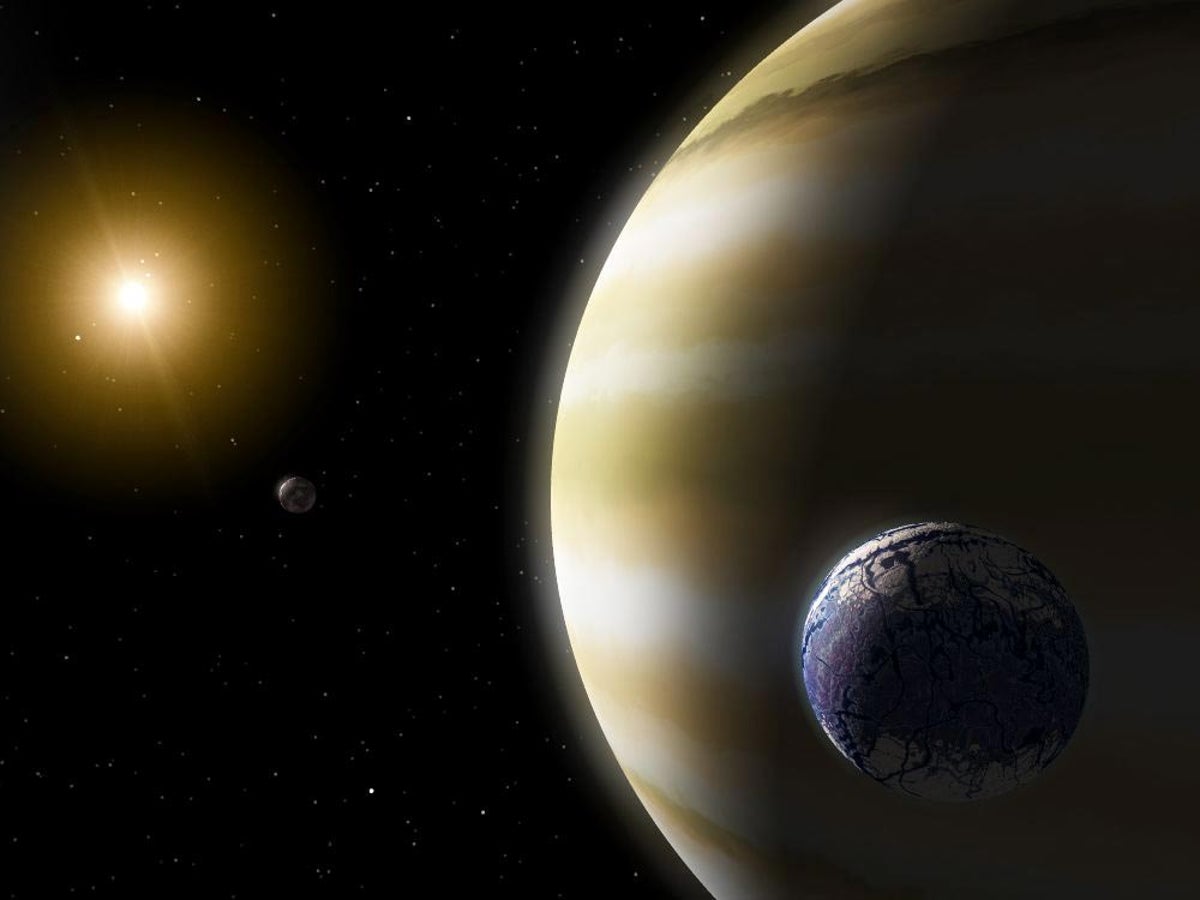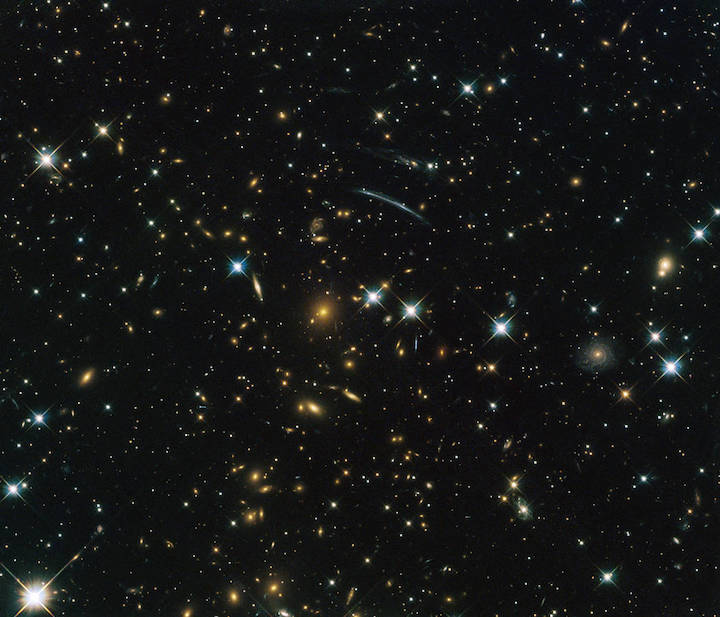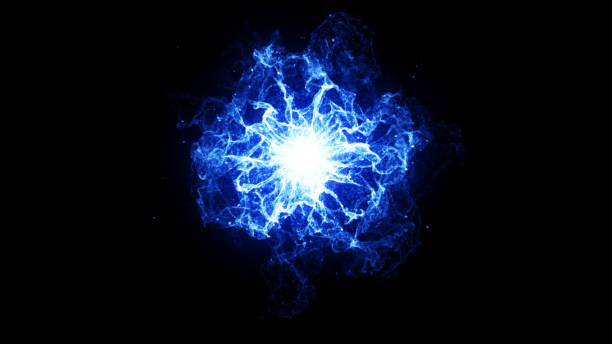The search for life beyond Earth has long focused on exoplanets—worlds orbiting distant stars that might mirror our own. Yet, as astronomical technology advances and the complexity of planetary systems unfolds, a new frontier has emerged: the search for habitable exomoons. These are moons orbiting planets outside our solar system, and they could, under the right conditions, sustain environments suitable for life. While no confirmed exomoon has yet been discovered, the growing understanding of how moons form, interact, and evolve has made them compelling candidates in the cosmic search for life.
The idea that life could exist on a moon rather than a planet challenges traditional assumptions about habitability. After all, within our own solar system, several moons—Europa, Enceladus, Titan, and Ganymede—display conditions that might support microbial life. If such potential exists here, it may well exist elsewhere. The concept of a habitable exomoon expands the boundaries of astrobiology, offering new possibilities for where and how life might emerge in the universe.
The Concept of an Exomoon
An exomoon is a natural satellite that orbits an exoplanet, much as the Moon orbits Earth. Just as exoplanets orbit stars, exomoons orbit planets, which themselves orbit their host stars. In theory, exomoons can form through similar processes as planetary moons within our solar system—either by accretion from the same disk of material that formed the planet, by capture of a passing object, or by co-formation during the planet’s early evolution.
Exomoons could range dramatically in size and composition. Some might resemble the rocky moons of the inner solar system, while others could be icy, ocean-bearing worlds like Europa or Titan. The diversity of potential exomoons is vast because they can inherit characteristics both from their host planet and the larger stellar environment in which they form.
The gravitational influence of their parent planet can profoundly affect their conditions. Moons close to massive gas giants experience tidal forces that generate internal heat, potentially driving subsurface oceans and volcanic activity. This tidal heating, combined with other sources of energy such as reflected starlight and radiation from the planet, could create conditions warm enough to sustain liquid water—even far beyond the traditional habitable zone where sunlight alone would be insufficient.
Habitability Beyond Planets
The traditional definition of a “habitable zone” focuses on the distance from a star where a planet could maintain liquid water on its surface. However, this definition assumes that stellar radiation is the only significant source of heat. Moons challenge that assumption. A habitable exomoon could remain warm and potentially life-supporting even if its planet orbits outside the star’s classical habitable zone, as long as internal or planetary energy sources compensate for the lack of sunlight.
This shifts the paradigm of habitability from being strictly about a planet’s orbit to considering the interplay of planetary and lunar dynamics. On Earth, life depends on sunlight, atmosphere, and a stable climate. On a moon orbiting a distant planet, life could rely on entirely different mechanisms—such as geothermal energy from tidal heating or chemical energy from hydrothermal vents.
If a large exomoon possessed a dense atmosphere, magnetic protection, and access to liquid water, it could potentially sustain conditions similar to early Earth. The presence of an atmosphere would regulate temperature, shield the surface from radiation, and support chemical cycles essential for life. Such moons could be miniature worlds, complete ecosystems orbiting larger planets rather than stars directly.
Lessons from Our Solar System
To understand what makes an exomoon potentially habitable, we can look to examples within our own cosmic neighborhood. While no moon in our solar system supports life as we know it, several demonstrate conditions that could, under the right circumstances, foster biological activity.
Europa, one of Jupiter’s four largest moons, is perhaps the most promising. Beneath its icy crust lies a global subsurface ocean of liquid water, warmed by tidal flexing as Jupiter’s immense gravity pulls and stretches the moon. The heat generated prevents the ocean from freezing solid, while hydrothermal vents at the ocean floor could provide the chemical energy necessary for microbial life.
Saturn’s moon Enceladus presents a similar story. Observations from the Cassini spacecraft revealed geysers of water vapor and ice particles erupting from its south pole, suggesting an underground ocean in contact with a rocky core. Chemical analyses detected organic molecules, salts, and silica particles—potential indicators of hydrothermal activity.
Titan, another of Saturn’s moons, stands apart for its dense atmosphere and complex chemistry. Though it is extremely cold, Titan’s atmosphere is rich in organic compounds, and its surface hosts lakes and rivers of liquid methane and ethane. While these liquids are not water, they demonstrate that chemistry and fluid dynamics capable of supporting complex processes can exist in diverse environments.
These moons provide a living blueprint for the types of conditions that could make exomoons habitable. If such environments exist within our solar system, there is little reason to believe they are unique to it.
The Dynamics of Tidal Heating
Tidal heating is one of the most critical factors influencing exomoon habitability. It arises from the gravitational tug-of-war between a moon, its host planet, and sometimes the star itself. When a moon follows an elliptical orbit, the varying gravitational pull causes it to flex periodically. This flexing generates friction within the moon’s interior, producing heat.
This process can sustain internal warmth for billions of years, long after radioactive decay has diminished. In systems with multiple moons, gravitational interactions can maintain orbital resonances that keep the orbits slightly eccentric, continuously fueling tidal heating.
The result is that even distant moons, far from the star’s warmth, can remain geologically active and maintain subsurface oceans. Europa and Enceladus exemplify this mechanism within our solar system. On an exomoon orbiting a giant planet in another system, tidal heating could make the difference between a frozen wasteland and a warm, oceanic world teeming with life.
However, tidal heating also has limits. Excessive heat could drive volcanic activity so intense that it sterilizes the surface, as seen on Jupiter’s moon Io. Thus, habitability depends on a delicate balance: enough tidal energy to sustain liquid water, but not so much that the moon becomes unstable or inhospitable.
The Role of Planetary Illumination and Magnetic Protection
In addition to tidal heating, moons benefit from secondary illumination—light and thermal radiation reflected or emitted by their host planets. For a moon orbiting a massive gas giant close to its star, this planetary radiation could significantly supplement the energy received from the star itself.
Such energy might be sufficient to maintain liquid water or prevent atmospheric freeze-out. For instance, a moon orbiting a “hot Jupiter”—a gas giant located very close to its star—would receive both stellar light and intense infrared radiation from the planet’s heated atmosphere. This dual illumination could create a micro-environment capable of supporting liquid water on the moon’s surface or beneath thin ice layers.
Magnetic protection is another crucial factor. A moon orbiting within its planet’s magnetic field could be shielded from stellar winds and cosmic radiation, preserving its atmosphere and surface stability. Jupiter’s magnetic field, for instance, extends far beyond the orbit of its moons, creating a massive magnetosphere that influences their environments.
However, the relationship between magnetic fields and habitability is complex. While a strong field can protect, it can also expose moons to intense radiation trapped within the planet’s magnetosphere. Europa, for example, endures high levels of radiation from Jupiter’s field, which could pose challenges for surface life but might leave subsurface environments relatively safe.
The Chemistry of Life and Exomoon Environments
Life as we know it depends on certain chemical conditions—liquid water, a stable energy source, and a supply of organic molecules capable of forming complex structures. A habitable exomoon would need to support these ingredients either on its surface or within a subsurface ocean.
Water remains the most critical solvent because of its unique ability to dissolve a wide range of substances and facilitate chemical reactions. The discovery of subsurface oceans on icy moons like Europa and Enceladus demonstrates that water can exist in abundance beyond the traditional habitable zone. If similar processes occur on exomoons, the potential for life expands dramatically.
Chemical energy sources are equally important. On Earth, deep-sea hydrothermal vents provide energy for entire ecosystems independent of sunlight. These vents release hydrogen, methane, and other molecules that microbes use for chemosynthesis. If comparable vents exist on ocean-bearing exomoons, they could support microbial life even in total darkness.
Moreover, the presence of organic compounds—carbon-based molecules essential for biochemistry—has been observed in the plumes of Enceladus and the atmosphere of Titan. Their existence suggests that the raw materials for life may be common across the universe. If exomoons possess similar chemistry, the leap from potential habitability to actual biology becomes more plausible.
How Exomoons Form and Why Size Matters
The formation of exomoons can follow several paths, each influencing their potential for habitability. One possibility is co-formation, where moons arise from the circumplanetary disk surrounding a young giant planet. This is analogous to how planets form around stars, with material in orbit gradually coalescing into solid bodies. Such moons tend to orbit in regular, near-circular paths, creating stable conditions favorable for long-term habitability.
Another mechanism is capture. A passing planetesimal or dwarf planet can be gravitationally captured by a larger planet, becoming its moon. Captured moons might have irregular orbits and diverse compositions, depending on their origin. If a captured moon retains volatiles like water and possesses sufficient mass to hold an atmosphere, it could still be habitable.
A third pathway involves giant impacts, like the one believed to have formed Earth’s Moon. In such cases, debris from a collision between a planet and another large body coalesces into a moon. While initially hot and unstable, such moons could eventually cool and stabilize, providing environments capable of sustaining life.
Size plays a fundamental role in habitability. A moon must be large enough to retain an atmosphere and maintain geological activity but small enough to avoid collapsing into a planet-like body. Generally, a moon with at least 10% of Earth’s mass could sustain an atmosphere over long timescales, while smaller moons would likely lose theirs to space. Large moons also have stronger gravity, helping them maintain liquid water and support stable climates.
Detecting Exomoons
Despite their theoretical abundance, exomoons remain elusive. Detecting them is one of the greatest challenges in modern astronomy because they are smaller, dimmer, and often obscured by their host planets. However, several promising techniques have been developed to identify them indirectly.
The transit method, which measures the dimming of a star as a planet passes in front of it, can also reveal signs of moons. If a planet has a moon, the transit light curve might display subtle variations or timing shifts due to the moon’s influence. This technique, known as Transit Timing Variations (TTV) and Transit Duration Variations (TDV), is one of the primary tools astronomers use to search for exomoons.
Another approach involves direct imaging and gravitational microlensing, where the light from a distant star is bent by a planet-moon system in the foreground. These methods are rare and difficult but may eventually confirm the first exomoon detections.
As observational technology improves, especially with instruments like the James Webb Space Telescope and future large-scale observatories, the sensitivity to smaller and more complex systems will increase. It is only a matter of time before the first confirmed exomoon is discovered.
Could an Exomoon Support Complex Life?
The question of habitability often centers on microbial life, but what about more complex organisms? Could an exomoon sustain forests, oceans, or intelligent beings? Theoretically, if a moon is large enough and stable enough, the answer is yes.
A massive exomoon with a dense atmosphere could experience a day-night cycle determined by its orbit around the planet and the planet’s orbit around the star. The presence of both starlight and planetary light could create unique ecological rhythms. The planet’s reflected light might even produce a dim “night sun,” allowing photosynthetic processes to continue during what would otherwise be night.
However, life on a moon would face challenges unknown on Earth. The gravitational influence of the host planet could cause frequent eclipses, leading to temperature fluctuations. The tidal forces that sustain internal heat might also cause geological instability. Magnetic interactions and radiation from the planet could shape evolution in ways difficult to predict.
Yet these very conditions might foster resilience and diversity. Life on a tidally locked moon—where one side always faces the planet—could adapt to extreme gradients of light and heat. Organisms might evolve under dim planetary glow, using chemical energy instead of sunlight. If complex life can emerge in Earth’s deep oceans and volcanic vents, it could conceivably do so on exomoons as well.
The Astrobiological Implications
The potential for habitable exomoons reshapes our understanding of where life might exist. Until recently, astrobiology focused on planets within the habitable zone. But if moons can support life, the number of possible abodes for biology multiplies dramatically. Every gas giant with a system of large moons could host several worlds suitable for habitation.
This realization expands the scope of the Drake Equation—the formula used to estimate the number of intelligent civilizations in the galaxy. The inclusion of habitable moons increases the potential number of life-bearing environments by orders of magnitude. Moons could serve as sanctuaries for life even when their host planets are inhospitable, such as gas giants with toxic atmospheres or extreme pressures.
Furthermore, exomoons could act as stepping stones in interplanetary ecosystems. Life might originate on a moon and later spread to nearby planets via meteorite exchange, a process known as lithopanspermia. This interconnectedness could make planetary systems more biologically dynamic than previously imagined.
Challenges for Long-Term Habitability
Despite their promise, habitable exomoons face unique challenges that could limit their long-term potential. Tidal locking, where one side of the moon constantly faces the planet, could result in extreme temperature contrasts. The side facing the planet might experience continuous heating from both tidal and radiative sources, while the far side could remain frigid.
Atmospheric loss is another concern. Smaller moons may lack sufficient gravity to hold onto their atmospheres, especially in systems with intense stellar radiation. Over millions of years, this could strip away protective layers and dry out the surface.
Radiation exposure also poses a threat. Moons orbiting close to giant planets could experience intense bombardment from the planet’s magnetosphere. On Jupiter, for example, radiation levels around Io and Europa would be lethal to most known forms of surface life. However, subsurface oceans and ice layers could provide effective shielding.
Finally, orbital stability must be considered. A moon’s orbit can be destabilized by gravitational interactions with other moons, the planet’s migration, or resonance effects. If a moon’s orbit becomes too eccentric, tidal forces could either tear it apart or eject it from the system entirely.
The Future of Exomoon Research
As astronomical technology advances, the study of exomoons stands at the threshold of discovery. The detection of even one confirmed exomoon would revolutionize our understanding of planetary systems and the diversity of potentially habitable environments.
Future telescopes, both ground-based and spaceborne, will possess the sensitivity required to detect smaller, Earth-sized bodies. The James Webb Space Telescope and upcoming missions like the Habitable Worlds Observatory are expected to play pivotal roles. Sophisticated data analysis methods, including machine learning, are also being developed to recognize the subtle signals that might betray a moon’s presence.
Simultaneously, computer simulations are refining our models of exomoon formation, stability, and climate dynamics. These simulations suggest that large, Earth-sized moons could be common around giant planets in the habitable zones of their stars. If true, the Milky Way could contain billions of potentially habitable moons—each a world of its own.
Philosophical and Cultural Perspectives
Beyond science, the idea of habitable exomoons holds profound philosophical implications. It challenges the anthropocentric notion that life must resemble Earth’s and that planets alone can host it. Moons could harbor ecosystems entirely alien in chemistry and form, driven by conditions unimaginable on our planet.
The discovery of life on an exomoon would also redefine our perception of cosmic habitability. It would demonstrate that life is not confined to narrow environmental parameters but can adapt and flourish under diverse conditions. This would strengthen the argument that life, in some form, might be widespread throughout the universe.
Moreover, exomoons capture the imagination in ways that planets sometimes cannot. A life-bearing moon orbiting a massive ringed planet under the light of a distant sun evokes visions of breathtaking alien landscapes—oceans reflecting planetary auroras, skies dominated by a gas giant looming on the horizon, and nights lit by the glow of reflected starlight. Such imagery merges science with wonder, reminding humanity that the search for life is not only an empirical pursuit but also a deeply emotional one.
Conclusion
The quest to understand habitable exomoons represents one of the most exciting frontiers in modern astronomy. By expanding the search for life beyond planets, scientists are opening new doors to possibility. Moons, once considered mere companions to planets, may in fact be the true jewels of the cosmos—cradles of life orbiting distant worlds.
From tidal heating and subsurface oceans to magnetic protection and atmospheric chemistry, the ingredients for life may exist in abundance across the universe. The examples within our own solar system—Europa, Enceladus, and Titan—offer tantalizing hints of what could be. If life can thrive in hidden oceans beneath ice and rock, then it could also emerge on moons orbiting planets in faraway systems.
Whether or not we ever find such life, the search itself expands our understanding of what it means to be habitable. It teaches us that life’s potential is not bound by our limited perspective but by the vast creativity of the universe itself. One day, perhaps soon, a telescope will detect the faint signature of an exomoon with an atmosphere, oceans, and maybe even signs of biology. When that moment comes, it will not only transform science but also our place within the cosmic story—a story that, as it turns out, may be written not just on planets, but on moons as well.






